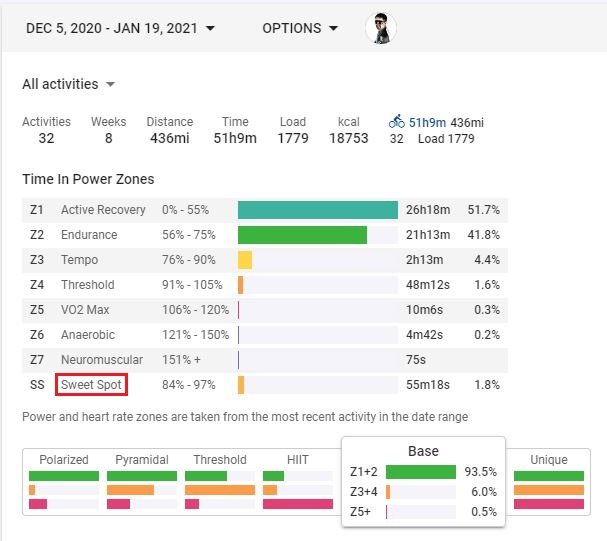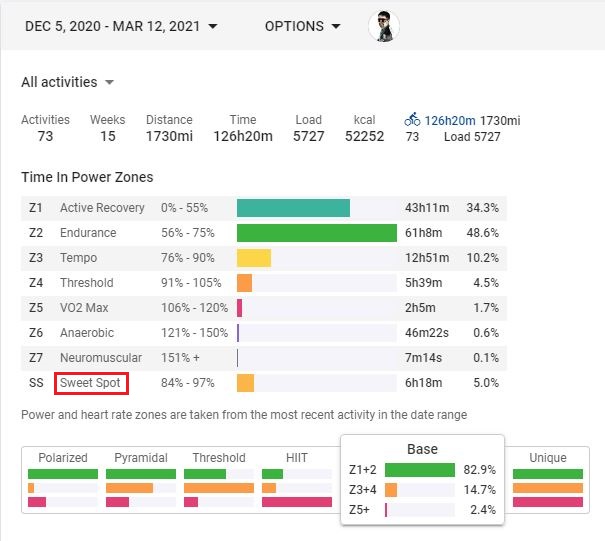TL;DR – If you select from recommended workouts the “black hole” time accrued is too short to be considered true SST. Colored zones by fitness signature are the same for everyone but of course very different in wattage. Some riders’ green zone watts will be my red zone watts although the relative strain remains the same for each rider. 
SS is a portion of the green typically defined as 84-97% or 88-94% FTP but can range from 75-97% depending on the study referenced or the platform focused on SST. Most SST platforms use the same marketing tagline – “Get fast in less time” or “Get fast, fast”. 
With Xert’s hybrid POL/PYR approach (get fit, then fast) you don’t spend a lot of time hovering at SS during intervals. You pass through SS on the way to threshold and up, but you aren’t spending time at SS%'s doing 3x5’s, 2x20 or whatever.
There are only a few workouts in the Standard library that would be considered classic SS workouts. For comparison purpose here’s a more classic SS entry from the Coaches library –
(2) Xert - Workout Designer (xertonline.com)
You can look at things as either session based (by workout), weekly based (1-2 high intensity workouts and others low intensity), or consider your total hours spent for any time period. If you’re interested in doing that link Strava to intervals.icu and see how your historical activity is rated there. You can view ‘Totals’ for a date range or specific workouts and rides.
For example, here’s my stats from Dec 5 (start of Base) until today, riding strictly indoors, following recommended workouts. There is a little over 3 weeks left in Peak until my first TED (April 4) this year.
Base phase –
Build phase –
Peak phase (1 week so far, 3 to go) –
All phases to date –
YMWV based on Athlete type, IR setting, how often you adjust the FF slider, and how often you go off-list or ride outdoors.
IMO Xert’s Progression charts and activity details are all anyone really needs to get fit and analyze their data. ‘Totals’ is the only function I use at intervals.icu. I don’t delve into further details nor worry about 5-7 zone counts, etc., but find it interesting to review old-school splits on occasion. Those competing with specific goals in mind and concerned about marginal gains may have a different opinion. 
There is a focus duration shift in Xert as you move through phases ending with your selected Athlete type focus during Peak. If you are a well rounded cyclist (see spider chart form under Ranking) you may not notice much difference, but if weak in some areas those workouts will feel harder while in the green to yellow zones. You can use that knowledge when viewing chart snapshots in the recommended list to avoid the kind of workouts you don’t like. That’s what I do whenever the top choice isn’t agreeable. 
Reference:
Program Phases – Xert (baronbiosys.com)
Stress, Focus, Specificity and Strain – Xert (baronbiosys.com)



